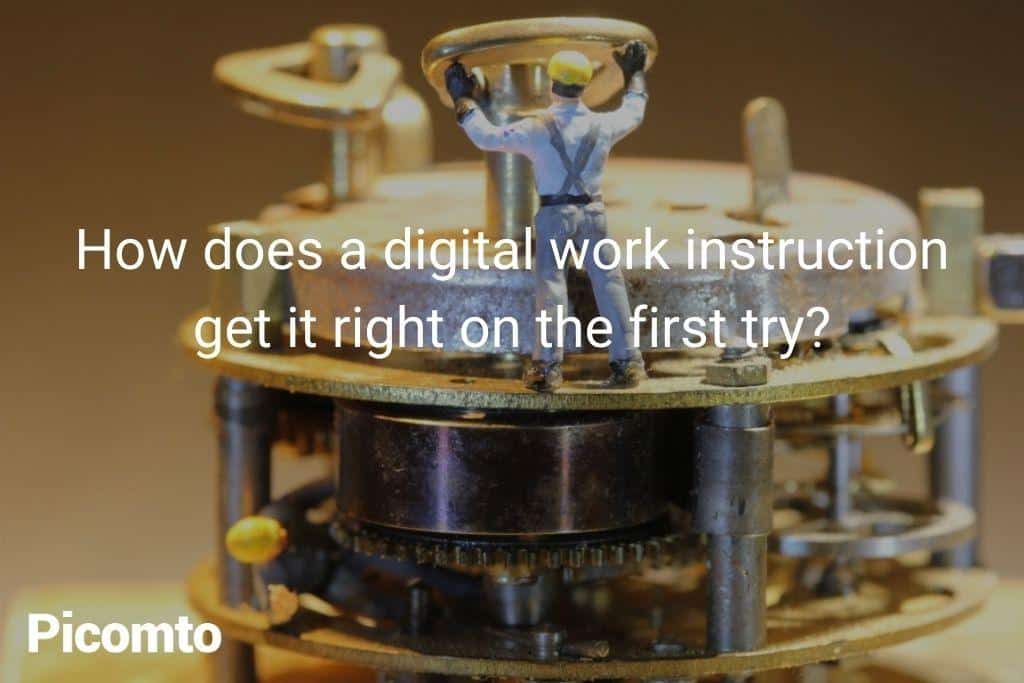
Non-conformities represent one of the main sources of revenue loss for industrial companies. In a rapidly changing environment where the various players are seeking to optimize their processes and improve their quality in order to remain competitive, waste and the production of defective parts are no longer tolerated. The integration of digital work instruction software allows operators to get it right the first time.
In fact, digitizing work instructions and transforming them into a more intuitive format makes them easier for operators to use and understand, which translates into a significant improvement in productivity and production quality. Let’s find out how!
Getting it right the first time: Lean concept
Lean Manufacturing is a concept based on the elimination of waste in the industrial process. The success in producing compliant parts the first time eliminates the production of non-conformities and the resulting loss of time. In this way, the process is optimized to improve the quality of production, thus limiting unnecessary losses and excessive returns.
By successfully applying work instructions and producing compliant parts, operators limit the company’s losses and maximize profits. In fact, for a company to be successful, each participant must perform their tasks in the best possible way.
According to the concept of Lean Manufacturing, the company would be able to eliminate the waste of time and raw materials due to defects and unnecessary travel.
Limiting waste and defects
The respect of optimized processes inevitably limits waste and defects that cause enormous losses to industrial companies. Limiting them therefore leads to an improvement in the company’s profitability as well as competitiveness.
The greatest wastage is found along the production chain. These are production defects and non-conformities. It may not be easy to do right the first time, but having access to clear, precise and up-to-date work instructions allows operators to succeed in their tasks, thus limiting unnecessary losses and production defects and therefore non-quality.
Paper work instructions: concentration of waste and defects
Difficult to update therefore obsolete
Paper-based work instructions have long been used in plants to help operators do their jobs better. With technological advances and the appearance of new work tools pushing the industry towards its 4th revolution, the use of paper is no longer efficient. Compared to digital media, paper is becoming obsolete. Companies wishing to attract young talents will not succeed in convincing them with outdated work tools.
In addition, the updating of work instructions in paper format seems impossible because it requires great resources and time. In today’s factories, no one would have enough time to update paper documents. For this reason, work instructions on paper are no longer updated and therefore become obsolete in relation to the new realities and work processes.
Difficult to access therefore not used
Paper documents are usually filed in the offices of production managers. To access them, the operator would have to leave the station and go through the paper mass. This is one of the main reasons why operators no longer use work instructions. This results in non-compliant parts and wasted resources. Due to the difficulty of access, the paper format is being replaced by digital media, which are more intuitive and easier to explore for specific tasks.
Use of text therefore not understandable
Text format, especially on paper, is the most difficult format to understand. Especially if they are quite old, documents can become confusing. Misunderstanding work instructions can be costly to the company in terms of lost time, waste and production defects.
Visual instructions are easier to assimilate and apply. This is another reason to digitize industrial documentation and move to more intuitive formats.
Digital work instructions: eliminating waste
Digitizing work instructions solves all the above problems and thus eliminates waste and non-conformity. In fact, switching to a digital format makes it easier to access and understand the work instructions.
Equipped with the connected multimedia devices, operators will have immediate access to the work instructions allowing them to apply them in real conditions and to perform their work in the best possible way.
To get it right the first time, operators must apply the process to the letter. This means that the process must be accessible and within reach of the operators when they need it. In addition, work instructions must be updated to reflect new processes and constraints.
Digitizing work instructions and industrial documentation allows companies to eliminate the waste of time that can result when the operator leaves his station to fetch a document or even to look for and understand information written on paper. The waste is not only due to travel, but also to the production of faulty parts.
Doing well every time
To eliminate waste and improve the performance of their operators, industrial companies need to get rid of the paper format and switch to digital work instructions. Digital work instructions allow operators to perform their tasks in the best possible way and get it right the first time. This helps limit the company’s losses due to waste and production defects. And finally, by optimizing processes and digitizing work instructions, companies can become more profitable and competitive in a changing ecosystem.
Picomto is the digital work instruction solution designed for your operators. Contact us for more information.




Leave A Comment